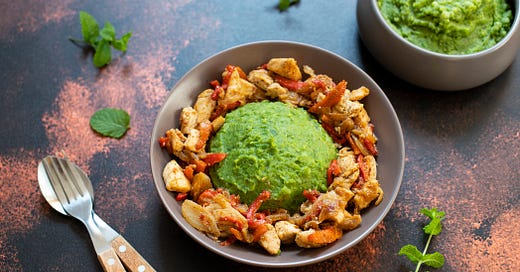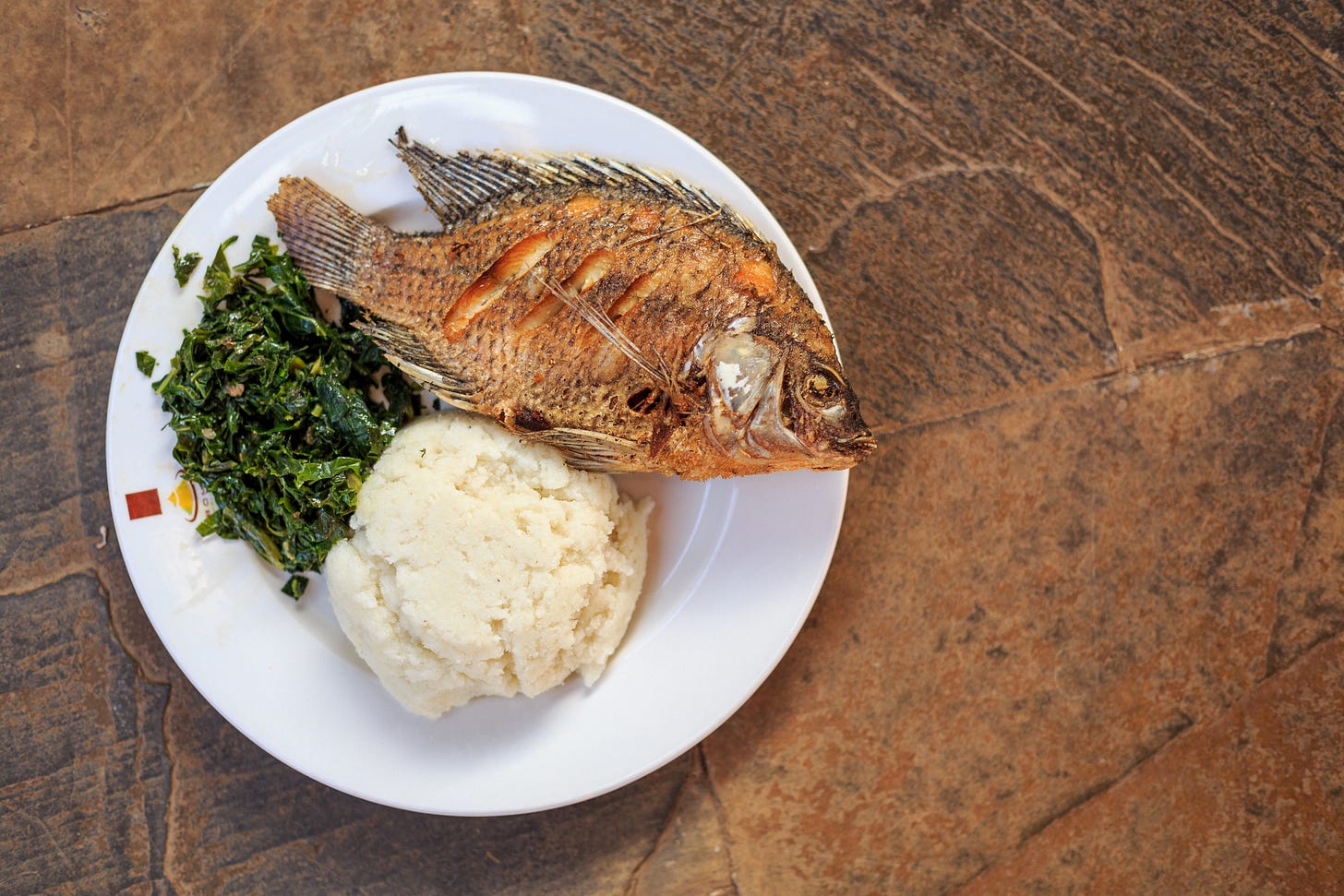Did you have a special birthday dessert and do you still continue that tradition? It recently came to my attention that some people are extremely and passionately specific about what counts as a “birthday dessert.” (I mix it up, but root beer floats are a recurring choice.) -Katherine
If you haven’t become a paid subscriber yet, please consider it. The money goes straight to paying freelancers a good rate - much better than most publications. And if not that, click on the heart icon above so I know you’re reading! Please enjoy the article below by Mwende Mutuli Musau.
The Dishes to Eat in Nairobi
By Mwende Mutuli Musau
The capital of Kenya, Nairobi, is one of the fastest-growing cities in Africa, which makes it the best place to embark on a Kenyan food escapade. “Nairobi” is a word from the nomadic Maasai tribe which translates to “cool waters,” in reference to the Nairobi River. Originally the land on which Nairobi stands belonged to the Maasai, but they were pushed out as the city began to grow. This region became the East Africa Protectorate in 1899 during British colonial rule. When Kenya gained independence in 1963, Nairobi became the capital of the Republic of Kenya. The food scene is thriving right now. Here are the foods you should seek out when you visit.
Ugali is a corn porridge and the staple food of Kenyans. Portuguese settlers introduced corn to Kenya’s coastal region in the 18th century or so. When the British invaded, corn was used as payment by colonialists in the White Highlands. Thus, ugali became Kenya’s staple food. A variation uses millet flour instead of corn. This dish is commonly served alongside fried tilapia and sukuma wiki (collard greens). The best restaurant offering this meal is Mama Oliech Restaurant.
Mukimo is derived from the word “kima,” which means “mashed meal.” A mixture of maize, potatoes, and cowpeas, mukimo comes from the Kikuyu community of central Kenya. Kikuyus are known to consume mukimo at all their social events.
Githeri is another staple food for the Kikuyu tribe. It’s a stew consisting of corn and beans, to which people add onions, tomatoes, potatoes, meat, carrots, and coriander to create a singular meal. This stew is flavored with cumin, turmeric, or chili powder, and is sometimes accompanied by rice or bread. Both mukimo and githeri are sold cheaply in kibandas, street food stalls that sell affordable meals. Githeri can also be found at high-end restaurants like Nyama Mama.
Chapati is a soft pan-fried, flaky, wheat flour bread that was introduced to Kenya by Indian traders and laborers who arrived in the early 1900s. Chapati is one of the most popular types of bread in Kenya and is consumed at every social gathering. The best restaurant for chapati is Chowpati Restaurant.
Nyama choma originates from the pastoralist nature of the Maasai who herd livestock in large numbers, specifically cows and goats. Nyama choma is roasted meat (beef, chicken, goat) that is tender and sweet. Ideally, this meal is consumed at a koroga (Kenyan barbecue).Barring that, try it at The Carnivore.
Kachumbari is a side dish that accompanies most Kenyan meat dishes. It’s a salad of tomatoes, onions, and coriander, very similar to pico de gallo. Peppers and avocados are optional. Kachumbari is found in every type of eatery. 🇰🇪
More Food Reading:
Controversy! Restaurants without phones. What do you think?
What if the market for fake-meat burgers is mostly omnivores giving something new a try? And full-time vegetarians are sitting it out? If, as the article states, only 5% of Americans are vegetarian, I think I might be right. Anyway, I, like the author of this article, really enjoy the veggie burgers of the ‘90s, with the rice and mushrooms and whatnot and no hint of imitating meat. (Burgerlords, the veggie burger restaurant referenced in the piece, is pretty darn good.)
Republicans are being disingenuous and evil here, per usual, but I’m also not totally on board with Biden cutting school lunch funding to schools that don’t have anti-discrimination policies. First kids have to go to a dumb-ass school, and now they can’t have lunch? I dunno.
Here’s a history of U.S. school lunches.
If you liked the newsletter today, please forward it to someone who’d enjoy it, and tap the heart icon above or below, which will help me reach more readers. I appreciate your help, y’all!
This newsletter is edited by Katherine Spiers, host of the podcast Smart Mouth.
A TableCakes Production.
Want to contribute? Here are the submission guidelines.














Interesting story. Sorry to mansplain but corn arrived in Kenya and East Africa via Arab traders in the 16th century and later through the Portuguese and colonialists. Interestingly, it was through a similar route via Turkey that corn arrived in Italy and was known as granoturco (“Turkish grain”). The west coast was given corn by the Portuguese in the 17th century.